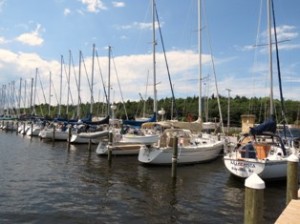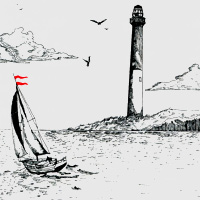How To Choose A Sailing School
WHAT TO LOOK FOR IN SELECTING A SAILING SCHOOL
Most novice sailors do not have a complete understanding of the proper plan to becoming a confident and competent sailor. They need to depend on sailing professionals.
Being an ASA sailing instructor of an outstanding award winning ASA sailing school for the past 15 years, I have some valuable insight I would like to share to help you select a sailing school.
WHAT TO LOOK FOR :
1. SAILING FACILITY
a) The sailing school should be accredited by either the American sailing Association (ASA ) or U.S. Sailing. Both have excellent programs, standards and world wide acceptance.
b) They should have a classroom for testing and lecture portions of the program.
c) After completing the course, the facility should offer a variety of boats to have available for its graduates to practice and develop their sailing skills.
d) The school must be willing to reschedule a class due to high/no wind or rain. Novice sailors need to build their confidence slowly and should not be told “You’ll have to sail in these conditions sometime.”
e) The school should offer class sizes of no more than 4 students per boat plus the instructor.
2. SAILBOATS
a) You should start to learn how to sail on the smallest sailboat that is comfortable for you. Most sailboats less than 19’ have the potential to capsize. This might be fun for children but most adults would prefer a drier experience.
b) The ideal sailboat for most adults to learn how to sail is on a boat that is between 20’-24’. The boat should be well maintained; Coast Guard (CG) approved and has a tiller steering. You cannot get the “feel” of the relationship with the wind, sails and rudder on a 35’ full-keeled sailboat with wheel steering.
3. LOCATION
a) You need reliable wind to sail. Small lakes are often surrounded by hills and trees that cause swirling winds that make it difficult for the novice sailor to maintain a course and practice sailing maneuvers.
b) Rivers have currents and are often crowded with boats (power and sail).
c) I think the ideal location for learning to sail; is a protected bay. They are usually wide enough to maneuver, give the feeling of open water and have reliable wind most of the year.
4. INSTRUCTORS
a) A seasoned sailor who is excited about sharing his/her sailing skills and knowledge with others is a great quality to be possessed by an instructor.
b) A good instructor must also be able to take complex ideas and explain them in easy to understand terms.
c) School teachers with years of sailing experience make excellent sailing instructors.
d) You also need to match your personality and learning styles with those of the instructor.
e) For me, the ideal sailing instructor would be a cross between Capt Ron and Horatio Hornblower.
5. PRICE
a) Most learn to sail classes are between $300 -$700.
b) They should be a minimum of 2 full days with 4-5 hours on the water /day.
c) The price should include the textbook, logbook, exam and ASA or US sailing certificate.

 Barnegat Bay Sailing Charters, 100 Harbor Inn Rd., Bayville, NJ 08721
Barnegat Bay Sailing Charters, 100 Harbor Inn Rd., Bayville, NJ 08721
No comments